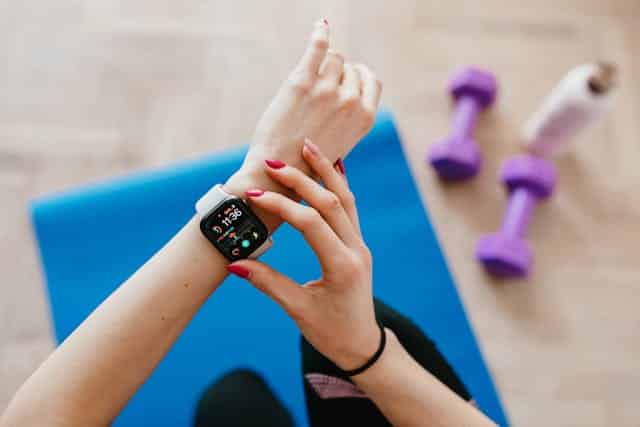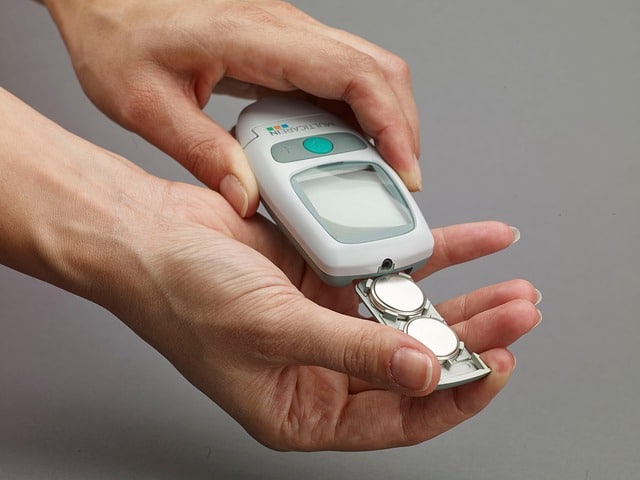The Best Smart Medical Devices That Solve Common Health Problems
Everyday health issues like poor sleep, nagging back pain, or elevated blood pressure can quietly erode your quality of life.
While these problems may not seem urgent, over time they drain your energy, disrupt focus, and increase long-term health risks.
That’s where smart medical devices come in.
These high-tech, easy-to-use tools are changing the way we monitor and manage health from home.
From AI-powered sleep trackers to app-connected blood pressure cuffs and posture-correcting wearables, smart medical devices are helping people take proactive control of their well-being without frequent doctor visits or expensive treatments.
What makes them truly revolutionary is how seamlessly they fit into everyday routines.
They gather real-time data, provide personalized insights, and often work silently in the background, empowering you to live with less discomfort and more confidence.
Unlike traditional medical tools, these devices are compact, user-friendly, and often app-connected, allowing you to track progress, set reminders, and share data with your healthcare provider with ease (Son & Kwon, 2023).
Whether you’re trying to sleep better, hear more clearly, or manage chronic pain after long workdays, smart medical devices offer practical, proven solutions. Let’s take a closer look at the ones making the biggest difference.
What Are Smart Medical Devices?
Smart medical devices are health-monitoring tools that use sensors, wireless connectivity, and AI-powered algorithms to provide real-time feedback about your body’s condition.
They can track vital signs, support chronic disease management, and even intervene when needed, all from the comfort of home.
Some are wearable, while others are handheld or discreetly integrated into daily activities.
What unites them is their ability to bridge the gap between clinical medicine and everyday wellness.
They’re designed to reduce the burden on healthcare systems while empowering individuals to take control of their well-being.
These smart medical devices don’t replace a doctor’s visit but often serve as the first line of awareness for subtle changes in your health.
Examples of Smart Medical Devices That Have Solved Common Health Problems

Smart medical devices are helping individuals take charge of their health by solving everyday issues that once required constant clinical intervention or were simply tolerated.
These tools are designed not just for efficiency but for ease of use, making them accessible to people of all ages and backgrounds.
From managing high blood pressure at home to improving sleep quality or reducing chronic back pain, each device addresses a specific challenge with targeted precision.
Below are some of the most effective smart medical devices currently improving quality of life quietly, consistently, and without disrupting your routine.
Digital Inside-the-Ear Hearing Aids
Hearing loss can develop gradually, often going unnoticed until it starts to impact your relationships, mental focus, and quality of life.
Modern smart hearing aids are nothing like the bulky models of the past.
Devices such as digital inside-the-ear hearing aids are now sleek, discreet, and highly functional.
These hearing aids come with programmable sound filters, Bluetooth connectivity, and noise-canceling features that improve real-world sound while reducing background noise.
They can be adjusted through smartphone apps and some even recharge wirelessly, removing the hassle of battery changes.
For individuals with mild to moderate hearing loss, you can order digital inside the ear hearing aids online and dramatically improve communication and daily interaction without the stigma often associated with traditional aids.
Wearable Posture Sensors and Smart Pain Relief Devices
Chronic neck, back, and shoulder pain are frequently tied to poor posture and sedentary routines.
Smart medical devices like wearable posture trainers and app-connected massage pads are helping people manage these musculoskeletal issues with precision.
Posture sensors gently vibrate to alert you when you start slouching, helping retrain your muscle memory for better spinal alignment.
Meanwhile, devices using electrical stimulation or heat therapy target muscle groups that need relief, improving blood flow and easing pain.
The Therabody company has produced several devices that provide this targetted relief, such as the Power Dot EMS device and the ThermBack LED.
This tech is a particularly useful health tip for office workers, remote professionals, or anyone recovering from injury and trying to restore optimal movement patterns.
App-Connected Blood Pressure Monitors
Managing hypertension doesn’t need to involve repeated trips to the doctor or outdated equipment.
Smart blood pressure monitors are compact, easy to use, and incredibly effective for early detection of cardiovascular changes.
These devices automatically sync data to your phone and generate easy-to-read reports that can be shared with healthcare providers.
Some also track pulse, heart rate variability, and irregular heartbeat detection, providing a more holistic view of cardiovascular health.
They’re especially useful for individuals with a family history of high blood pressure, people managing chronic stress, or those who need to track their progress while adjusting medications or lifestyle changes.
Anti-Snore Sleep Trackers

Snoring isn’t just disruptive; it can be an early sign of sleep apnea or poor airway positioning during sleep and indicate an increased risk of several other common health problems (Cho et al., 2020).
Smart sleep devices like anti-snore wearables and sleep posture trackers use biosensors and gentle vibration cues to help reposition the body without waking you up.
These tools are designed to detect patterns of disrupted breathing, prompting adjustments that support better airflow and deeper sleep cycles.
When combined with basic sleep hygiene practices, they can reduce fatigue, improve focus during the day, and even lower cardiovascular risk.
Many devices also offer detailed sleep reports through companion apps, helping users identify triggers like alcohol, stress, or screen time that may worsen nighttime breathing.
Blue-Light-Filtering Glasses and Screen Wellness Tools
Digital eye strain, also known as computer vision syndrome, is one of the most common problems for modern professionals and students.
Smart screen wellness tools, such as blue-light-filtering glasses, ambient light monitors, and blinking reminder apps, are small but powerful tools in eye health.
Some smart glasses even adjust tint based on lighting conditions or time of day.
Others are integrated with wearable sensors that measure blink rate and screen distance, offering haptic feedback when you’re overdue for a break.
While they might seem simple, these smart medical devices can prevent long-term visual fatigue and help regulate melatonin production for improved sleep quality.
Continuous Glucose Monitors
Continuous glucose monitors (CGMs) are smart medical devices that track your blood sugar levels in real-time, offering a clearer picture of how your body responds to food, stress, and activity.
Originally developed for people with diabetes, CGMs are now being used more widely as part of personalized nutrition and preventive healthcare.
Worn on the upper arm or abdomen, these devices use a tiny sensor to measure glucose in the fluid between your cells, updating data every few minutes and syncing to your smartphone.
Companies like ZOE incorporate CGMs into at-home testing kits to help users discover how different foods uniquely impact their blood sugar.
ZOE’s research shows that even identical twins can have dramatically different glucose responses to the same meal, which makes understanding your personal data essential.
Over time, better blood sugar control can support improved energy levels, reduced cravings, and a lower risk of metabolic conditions like type 2 diabetes and heart disease (Patel et al., 2025).
Whether you have diabetes or not, CGMs provide actionable insights that can reshape how you eat and how you feel.
They’re a powerful example of how fitness trackers and smart medical devices are fueling a new era of personalized, preventative healthcare.
Fitness Trackers
Fitness trackers are one of the most popular smart medical devices used today, helping people stay accountable for their movement, sleep, and overall wellness goals.
These wearable devices collect real-time data on key health metrics such as step count, heart rate, calories burned, sleep quality, and even stress levels.
Many advanced models now include blood oxygen monitoring, skin temperature tracking, and ECG capabilities, offering a more complete view of your health over time.
Fitness trackers sync with smartphone apps to visualize trends and provide personalized recommendations based on your daily patterns.
Some also include goal-setting features, reminders to move, and guided breathing exercises for stress relief.
For individuals looking to lose weight, improve cardiovascular health, or simply stay active, fitness trackers offer both motivation and insight.
What makes them truly impactful is how they turn passive health data into actionable steps.
Whether you’re managing a chronic condition or just trying to improve your daily routine, fitness trackers help transform intention into sustainable behavior change.
Smart Prosthetics

Smart prosthetics are redefining what’s possible for individuals living with limb loss by combining advanced robotics, sensors, and artificial intelligence to closely mimic natural movement.
Unlike traditional prosthetic limbs, smart prosthetics can interpret signals from the user’s muscles or nervous system to move with greater precision, control, and responsiveness.
These devices often feature microprocessors that adjust in real time to changes in terrain, speed, or force, allowing for smoother, more adaptive movement.
Some models even use machine learning to “learn” a user’s gait or preferred movements over time, improving function with continued use.
For many users, smart prosthetics restore a greater sense of independence, reduce physical strain, and enhance confidence in daily activities.
They also play a growing role in rehabilitation, helping users rebuild muscle control and balance.
As technology continues to evolve, smart prosthetics are becoming lighter, more intuitive, and increasingly accessible, making them a remarkable example of how smart medical devices are transforming healthcare and quality of life.
Final Thoughts: How to Use Smart Medical Devices for Better Health

Smart medical devices are part of the latest wave of medical revolutions that changed healthcare, making it more personalized, preventive, and accessible than ever before.
These tools empower you to better understand your body, respond to subtle health changes, and take action before small issues become serious concerns.
Whether it’s fitness trackers monitoring your daily activity, digital hearing aids enhancing communication, or app-connected monitors tracking vital signs, these innovations bring clinical-level insights into the comfort of your home.
You no longer have to wait for symptoms to worsen or rely solely on occasional checkups to stay informed.
Combined with the rise of telehealth in fitness, which has made it easier for people to access expert guidance and stay active from the comfort of their own homes, smart medical devices help blend medical support with daily wellness routines.
When used consistently, smart medical devices can support meaningful lifestyle changes that improve energy, focus, sleep, and overall quality of life.
It’s about working smarter, not harder, to feel your best and stay well!



